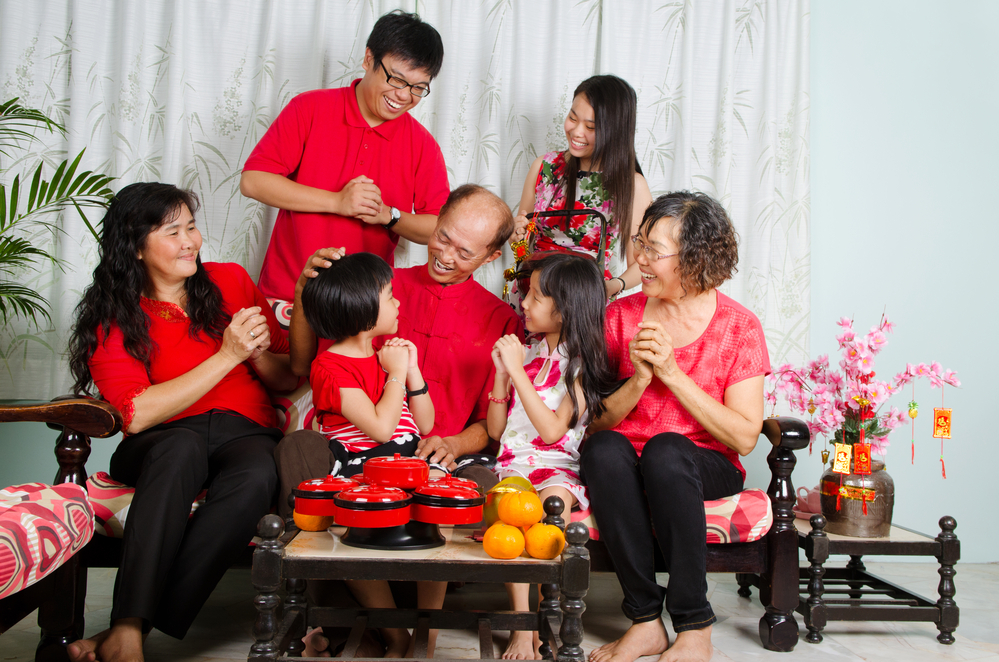
Singapore is known to be a multiracial and multicultural country.
With 75% of Singapore dominated by the Chinese, it is no wonder there are four subgroups or Chinese dialect groups who are Hokkien, from the Fujian province of China, and Cantonese, Teochew and Hakka from the bigger province of Guangdong in China.
Despite the different dialect groups, one commonality the Chinese share is the importance placed on Chinese New Year, or the Spring Festival. Deemed as one of the major festivals observed by the Chinese community, Chinese New Year marks the first day of the lunar calendar and is a time of reunion and a reinforcement of cultural values such as family harmony, social relations, and securing good fortune for the coming new year.
With Chinese New Year just around the corner, it is timely to return to our roots in search of some of the Chinese New Year traditions observed by the different dialect groups here in cosmopolitan Singapore. Though please note that these traditions are by no means exhaustive.
Chinese New Year Traditions that are unique to the different dialect groups in Singapore
Hokkien
For the Hokkien, the use of pineapples (pronounced as ‘ong lai’) during prayers and decorations is common as the name sounds like the coming of prosperity. Pineapple tarts are a popular Chinese New Year snack where sugar is cooked with pineapple and made into jam that is topped on a buttery biscuit base.
Though a more unique aspect of the Hokkien tradition is their respect for women.
Trivia:
One Hokkien Chinese New Year tradition says that the grandmother is the one leading the prayers. She is also the first person to give out red packets or hong bao (红包) to everyone in the family!
Cantonese
Where food is concerned, the Cantonese spare no effort. It is a Chinese New Year tradition for the Cantonese dialect group to put a lot of thought into the food prepared for reunion dinner such that each food item or dish includes an ingredient that symbolises good blessings for the new year ahead.
For example, fatt choy (发财) – a hair-like black fungus – which literally means prosperity in Cantonese is a must-have.
Trivia:
It is believed that the Cantonese were the ones who brought yusheng (鱼生) or lou hei to Singapore.
Yusheng is a raw fish salad mixed with shredded vegetables topped with a variety of condiments and sweet sauce. The action of mixing the ingredients with chopsticks is called lou hei which means “toss up good fortune”.
Since its introduction in recent years, yusheng has become a staple in almost every Chinese New Year tradition.
Teochew
Their use of olives during prayers and greetings during Chinese New Year is what sets the Teochews apart from the other dialect groups. Originally using areca nuts, it was gradually replaced with olives during gift exchanges as a symbol of courtesy.
Unlike the Cantonese, Teochews usually have steamboat at reunion feasts due to the cold weather in the Chaozhou province. It is also a Chinese New Year tradition for the Teochews to have leftovers at the reunion dinner as they believe this signifies excess and abundance in the new year.
Trivia:
One Chinese New Year tradition or ingredient used by Teochew is leek. This ingredient is often used to signify “plenty of money to be counted and kept”.
Hakka
Hakkas, known as nomads due to their historic migrations, are resourceful and resilient people.
Like most dialect groups, the Hakkas’ way of celebrating Chinese New Year is somewhat similar. However, one very special dish known as the Hakka Abacus Seeds or Suan Pan Zi (算盘子) is traditionally seen during festivities.
‘Counting beads’ would assure prosperity for the new year ahead hence it is a popular dish despite its tedious preparation. Another dish that is important during Chinese New Year is the Stuffed Intestine with Egg or Chun Guan Chang (春灌肠) as egg sounded like “spring” in the Hakka dialect.
Trivia:
In Singapore, most Hakkas who originated from the Fengshun county in China ended up living on Pulau Ubin.
Read also: Chinese New Year Traditions You Need To Know
There you have it – some unique Chinese New Year traditions and food that are customary must-haves in the different dialect groups!
Though one thing worth noting is the assimilation of customs and traditions after living in a multicultural society like Singapore. Regardless of the differences in the dialect groups, one thing the Chinese will agree on is that the Spring Festival will bring blessings, prosperity and abundance to everyone.
Here’s wishing one and all a prosperous Lunar New Year!























